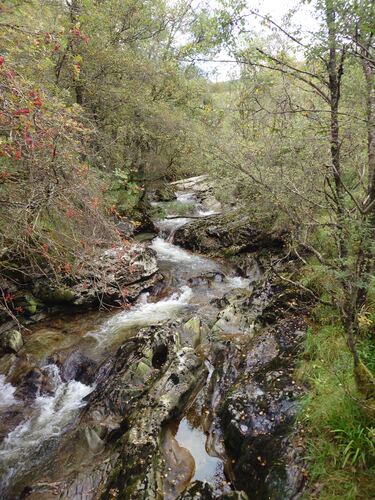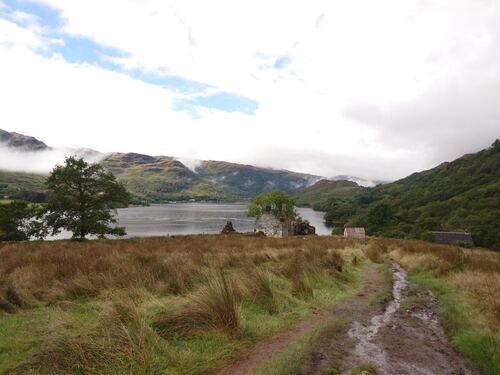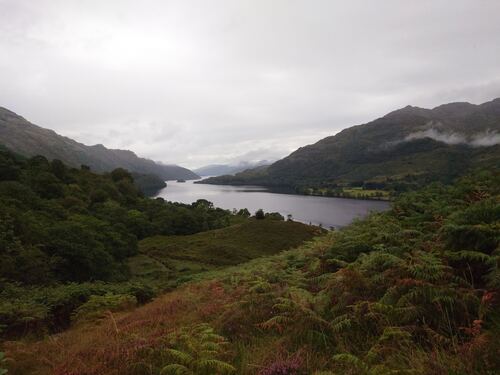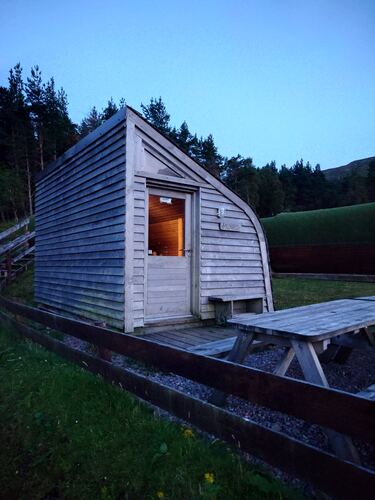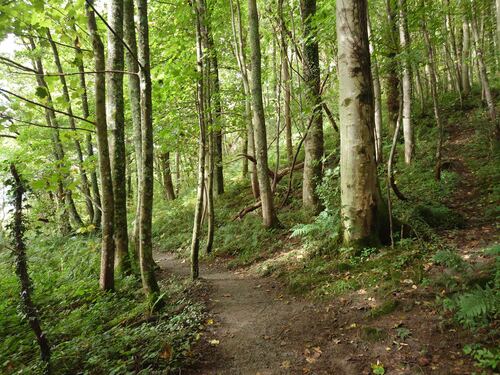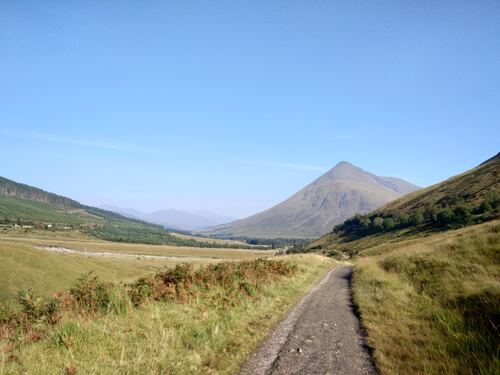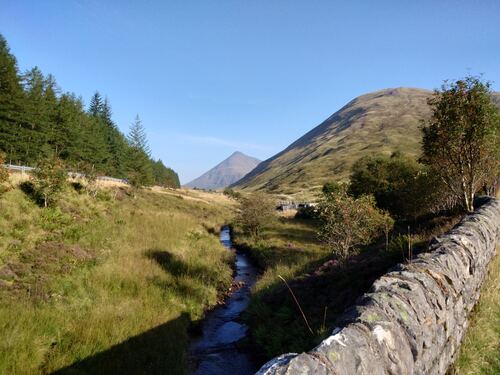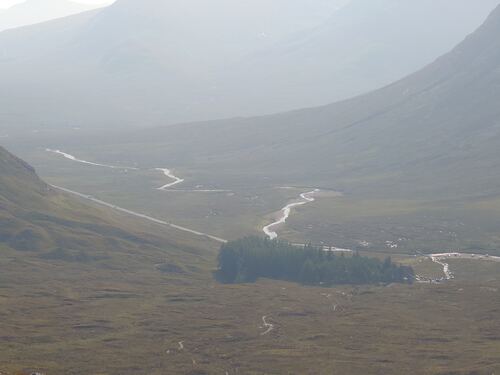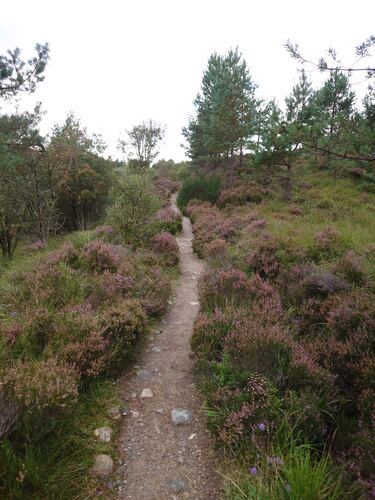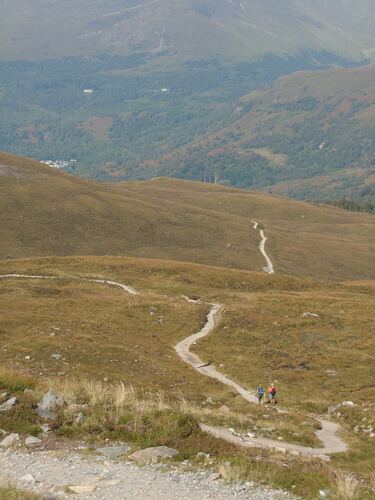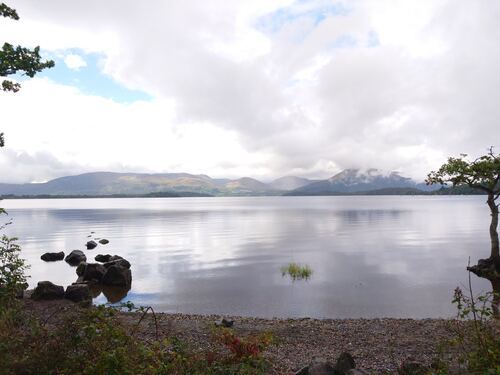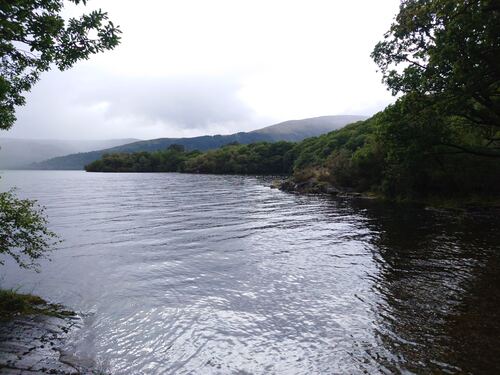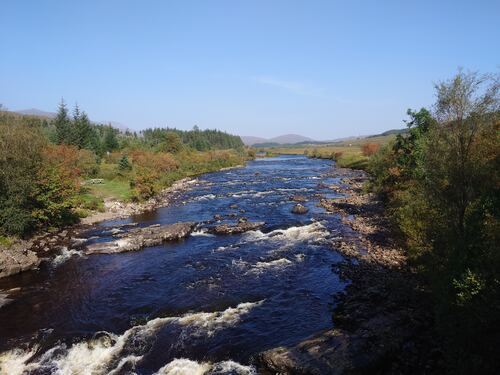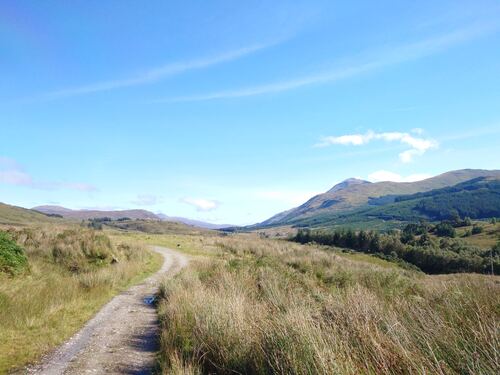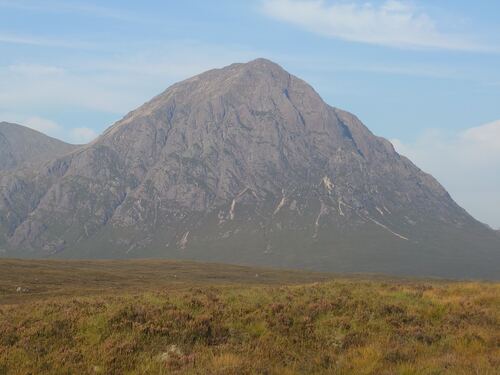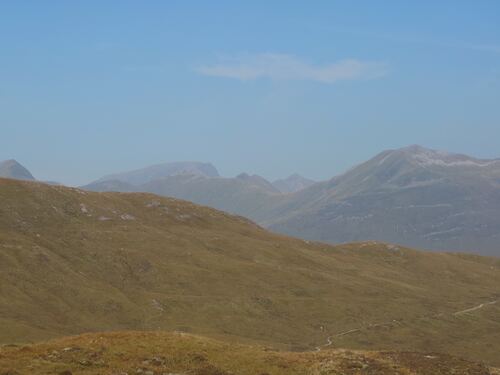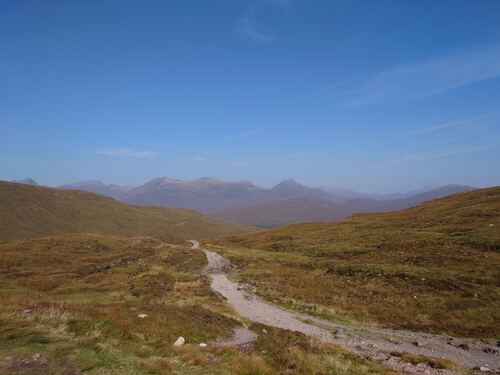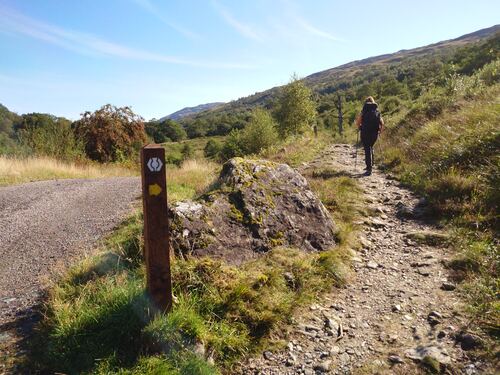The West Highland Way is a waymarked, long-distance path in Scotland. It starts just north of Glasgow and ends at Fort William in the Highlands. It is probably the most famous of Scotland’s Great Trails (similar to the National Trails in England and Wales). In September 2024 I walked the West Highland Way over seven days with my partner Vicki.
Planning
At 154 km the WHW will take most people between 5-10 days to complete. We didn’t fancy any super long days, so we decided to do it in 7 days.
There are many options when it comes to accommodation and supplies. Many people carry a tent and camp along the way which provides the ultimate flexibility for splitting up days. The right to roam exists in Scotland so you can generally camp and walk anywhere, but there are some camping restrictions along the way. On the other hand, it is completely possible to walk the WHW with only day packs as there are very good pack transport services along the way. We opted for the middle ground: we carried our own supplies, but we stayed in accommodation along the way.
My supplies consisted of two full sets of clothes, one to wear and one in my pack for the next day, plus an extra t-shirt to wear at night. This means it’s necessary to do laundry every day, but it’s worth it for the lighter pack. I didn’t bring any specific evening shoes, but I wish I brought some lightweight sandals as putting damp boots back on is not pleasant. I carried a minimal bathroom kit, some cold weather gear (hat and gloves), two thermal layers (fleece and puffy), waterproofs, my Kobo for reading and phone charger etc. For water I use a 2.5 L bladder.
Accommodation needs to be booked and booked early. We booked our accommodation around two months before the trip and many places were already unavailable. The WHW is extremely popular and there are many walking groups that do block bookings. Supplies are available on all days but this needs to be planned as there are long sections without anything them home. We never found ourselves carrying more than our lunch each day.
One cannot talk about the Highlands without talking about two things: the weather and the midges. Winter in Scotland is considered a challenge to say the least, and summer is plagued by the midges. This leaves spring and autumn as the only real options. Early spring is perhaps the ideal time to do it, but autumn works too. If you spend a week in the West Highlands you can pretty much guarantee you’ll encounter rain no matter what the time of year, though. Waterproofs are an absolute must, and I would recommend a midge net for your face and long-sleeved clothing.
Walking
Day 1: Milngavie to Drymen
The forecast spoke of rain. It had rained all night in Glasgow and continued to rain in the morning as made our way by train out to Milngavie. We started the walk around 11:00 and were fortunate to do so during a break in the rain. The official start of the WHW is unmistakable and definitely gets you excited.
The path begins well within the outskirts of Glasgow and we crossed paths with many a dog walker, but it soon leads into the countryside.
The rain started again before midday. We managed to eat our lunch, standing up, during a short spell of lighter rain, but then it really came down heavily and persistently for the whole afternoon. There is not really much more to say about this day: it rained.
There were many more walkers than we expected, but we quickly lost track of them all. We managed to keep our boots fairly dry by carefully straddling the endless puddles but we would be passed by other walkers, heads down, as they strode right through the middle, presumably already soaked to the skin. It was miserable to say the least.
Just before we arrived at Drymen the rain had stopped, but we were soaked. Our waterproofs had done their best, but there is a limit. Even our bags were damp inside. But at least we had dry clothes and a warm room.
Day 2: Drymen to Rowardennan
Our boots had almost dried overnight so we started with dry clothes, which was nice. The weather started off a lot nicer. On this day it became apparent just how many people were walking the same way. We passed countless groups and presumably there were many faster walkers ahead of us too. I think I saw one of the accommodations in Drymen had over 100 rooms.
We got our first view of Loch Lomond before the climb over Conic Hill. Unfortunately we were walking up into a cloud. No rainfall, but it was wet. The views of the Loch from Conic Hill are meant to be splendid, but we couldn’t see anything.
The second half of the walk was much flatter. Lots of pine forests and some views, but visibility remained low. It seemed like quite a long walk, but we eventually got to the Ben Lomond Bunkhouse at around 17:30. There are only around 10 beds but everyone was friendly and it was good fun.
Day 3: Rowardennan to Inverarnan
We started walking in a group with two companions who also stayed in the bunkhouse. This is supposed to be the hardest part of the WHW so we got a nice early start. The first half was really easy with wide, flat paths and few puddles. There is essentially no way out of this part of the path. There is loch to one side and a steep climb out to the other. Half way was at a hotel which is the only source of supplies for the whole day, but is well geared up to provide lunch to the hordes of walkers.
The rain started again just as we were leaving after lunch. It was at this point I realised I’d left my waterproof jacket in the bunkhouse. I managed to arrange a pack transport service to deliver it to Tyndrum, but that meant I wouldn’t get it until the end of the next day. Luckily one of our companions was kind enough to lend me her poncho for the afternoon. I needed it!
In addition to the rain, this part of the way lived up to its reputation: it was tough. Pretty much nonstop scrambling over rocks and tree roots all afternoon. But we remained in high spirits and it certainly wasn’t as miserable as day one. The occasional view across Loch Lomond certainly helped in this respect. The day ended with rain, and soggy feet, but we had a nice warm room to dry everything in.
Day 4: Inverarnan to Tyndrum
By this point of the walk we were expecting rain every day. So imagine our surprise when the forecast showed clear skies, sun and highs of 24°C! It seemed unbelievable but, sure enough, it started off clear and sunny. In fact it stayed this way for the entire day. We could finally see where we were and it was stunning.
We took a detour to Crianlarich for lunch and found a very well-stocked Londis. Everywhere we went there were walkers. The second half was quite spectacular and we even ended up donning sun hats! We stayed at Tyndrum which is an odd place. It’s more like a motorway services than a village.
Day 5: Tyndrum to Glencoe Mountain Resort
The great weather continued. Not a cloud in the sky. This was probably the most spectacular day. It started off flat as we walked between mountains towards the Bridge of Orchy. We followed the West Highland Line and saw how it snaked through the terrain. We got 10 km done well before midday, but as it was a long day we decided to push on further before lunch.
We climbed out of the Bridge of Orchy and had spectacular 360 degree views before heading back down to the river where we would have lunch. The afternoon was uphill and became a little tough in the heat as there was very little shelter as we made our way across Ranoch Moor. This was the most remote part of the walk so far. In reality it’s only a few kilometres from the main road, but when you’re out there you might as well be on the surface of moon.
Our bed for the night was a “glamping” pod at a ski resort. It was a lovely clear night and I saw the Milky Way for the first time in many years.
Day 6: Glencoe Mountain Resort to Kinlochleven
Following yesterday’s long day, we had the shortest day of our walk at only 16 km. But it did involve one of the more considerable climbs up Devil’s Staircase. It started off easy enough following the road into the valley that looks like a giant half pipe. Then we departed to climb up high above the road to the highest point on the walk and some nice views. The next set of mountains in front of us became visible at this point, including Ben Nevis.
The afternoon was all downhill but seemed to be taking forever before descending rapidly into Kinlochleven at the end. We followed giant pipes down the hill, presumably carrying water for the hydro-electric power plant or aluminium works in Kinlochleven. The village itself is surrounded by high mountains on almost all sides. The water pressure from the taps was incredibly high!
Day 7: Kinlochleven to Fort William
Our last full day would end at Glen Nevis which is only a short way from Fort William. The constant sun was finally over; there were clouds hugging the hills in the morning. This was the worst day for midges. We left the village with midge nets on and kept them close by the whole morning. The day started with a steep climb into the woods, but was soon over and flattened out. Most of the day was on an old drove road through a valley between the hills. The sun came out a bit but there was a definite change in the air, but luckily no rain.
The day was quite easy but fatigue made it seem longer. Towards the end we could see Fort William from high up before another rapid descent. We left the path for the night to stay in Glen Nevis. The next day we planned to summit Ben Nevis, but the weather looked bad and we didn’t fancy climbing into a cloud again so we stayed closer to the ground.
On our final day in the Highlands we completed the walk into Fort William. The end is not as impressive as the start and the weather had returned to more a normal rainy, blustery character. The best part about this final day was the train ride back to Glasgow on the West Highland Line. It’s a four hour journey, but it flew by. I could have stayed on for another four hours.
Reflection
We thoroughly enjoyed the West Highland Way, despite the rain and the midges. It’s not an easy walk, but it’s by no means the most difficult either. This makes it well within the capabilities of most people, especially if done over more days. For more capable walkers it still has a lot to offer and the prospect of camping along the way is attractive to many.
The most unexpected part of the WHW was the number of people. There were many foreigners, most notably Americans. I had no idea people travelled all the way to Scotland to walk. There were also many different kinds of people with varying degrees of experience. Many probably on their first (and perhaps last) long-distance walk. Some people had huge packs and looked miserable as a result. I’ve been there. A light pack makes all the difference.
The number of people could be considered a downside for people looking for more alone time. There is some to be found, but you’re never that far from other people. However, I suspect more people consider this is a positive than a negative. Similar to the Camino de Santiago in Spain, you could easily make friends on this walk if you wanted to.
